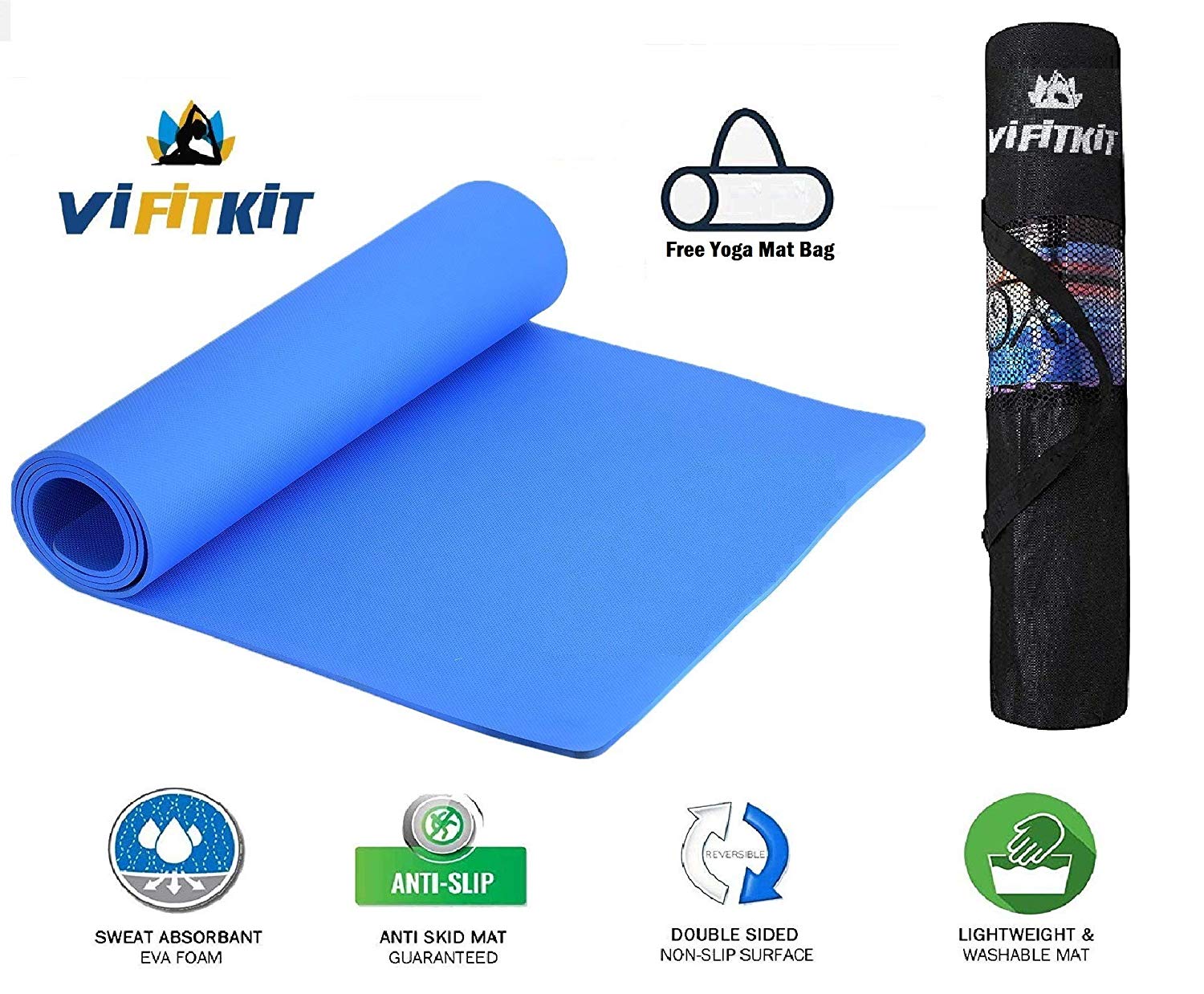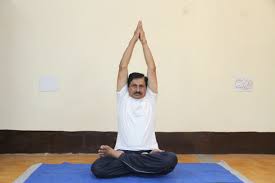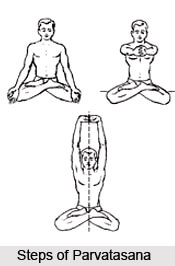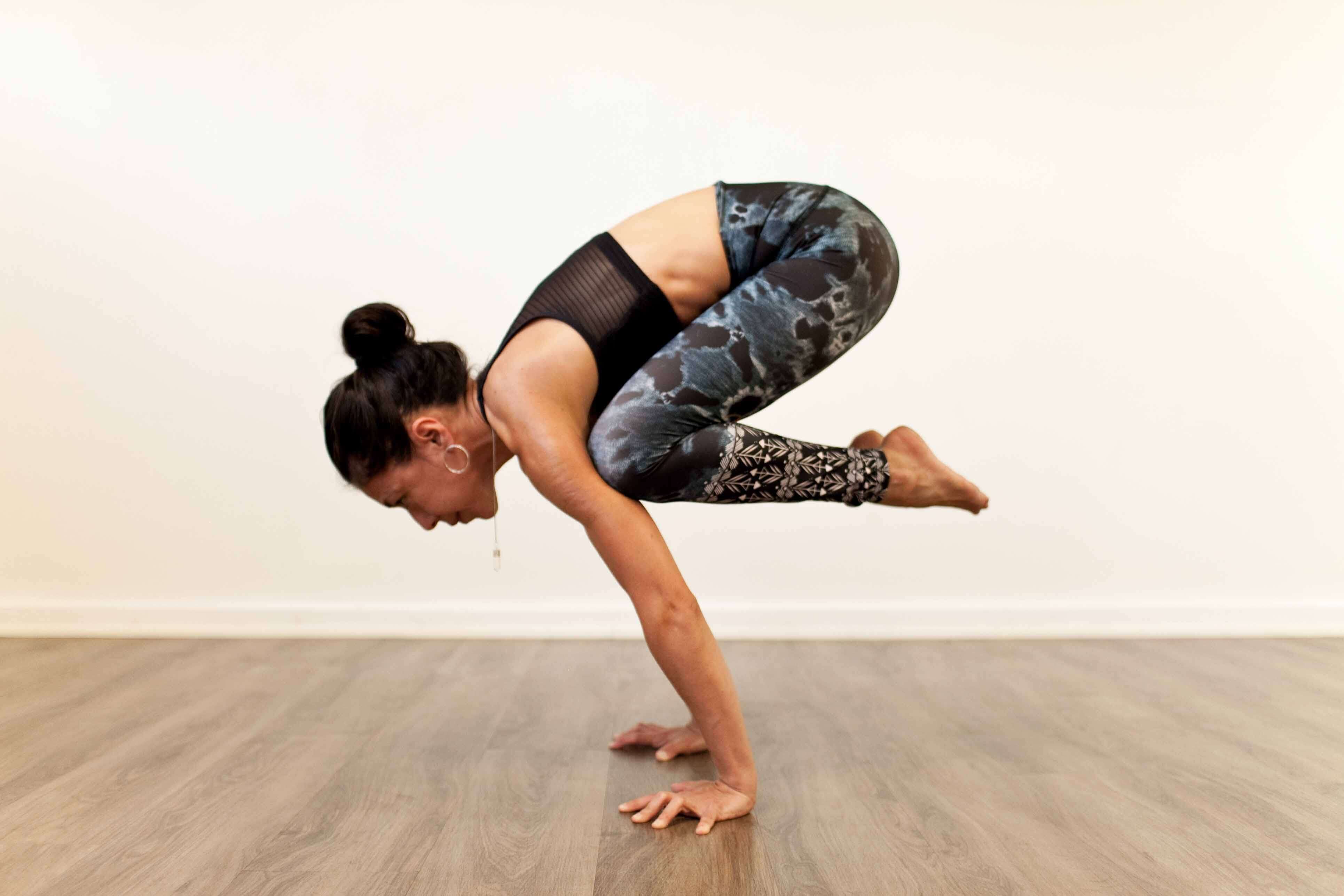Parvatasana
Parvatasana is one of the asanas that forms a part of Surya Namaskar or Sun Salutation. It is also referred to as the Mountain Pose. Parvatasana is the fourth and ninth pose of Surya Namaskar asana series. The term “Parvata” means mountain in Sanskrit. It is named in this way as while doing the pose a person appears like a mountain when viewed from the sides. Practicing Parvatasana can be a great way to enhance the strength of the legs and wrists. This asana also helps to enhance the blood flow to the head. Parvatasana can also stimulate the lung and heart muscles, which is why it can make these organs healthy. It can also relive pain and discomfort with the spinal cord, lumber, knees, shoulders and ankles. Additionally, the asana can resolve the problem of varicose veins.
Steps of Parvatasana
Here is a look at the steps involved in the practicing of Parvatasana.
- Since Parvatasana forms a part of asanas associated with Surya Namaskar, it is to be performed after practicing Ashwa Sanchalanasana. Therefore Ashwa Sanchalanasana is the starting point for practicing Parvatasana each and every time.
- Once you are done with Ashwa Sanchalanasana, you need to straighten your bend leg and gradually take it backwards. Keep on exhaling while you do this. Make sure that your left and right foot stays together.
- Now slowly raise your buttocks up. Support the weight of your body with the two arms that are positioned on the floor. Now lower your head so that it is between your two arms. This can give your body the shape of a mountain or a triangle.
- If you are doing the asana as a part of Surya Namaskar, you can chant the mantra “Om Marichaye Namaha”. The mantra is to be chanted when you are doing this pose as the 9th pose of Surya Namaskar.
- When you are doing the Parvatasana as the 4th pose of the Surya Namaskar, you should chant the mantra “Om Khagaya Namaha”.
Preparatory Poses for Parvatasana
The preparatory poses for Parvatasana are Ashwa Sanchalanasana, Sukhasana, Ardha Padmasana and Padmasana.
Follow up poses for Parvatasana
The follow up poses that you can practice with Parvatasana are Ardha Matsyendrasana, Sharanagata Mudra, Vrikshasana and Parsva Sukhasana.
The science of Parvatasana
Parvatasana is considered to be one of the most stimulating and energizing yoga poses. It causes the back to stretch which can lead to relaxation of the spine. This in turn can completely calm the mind. The Parvatasana can activate muscles of the legs and arms. Parvatasana also helps to boost one’s self-confidence and enhance mental concentration and stamina. It helps to improve the moods significantly. The asana acts mainly on throat chakra or Vishuddhi Chakra which helps a person to express his or her needs clearly and lucidly.
Tips for performing Parvatasana
To practice this asana, it is important that you only learn it from an experienced yoga teacher who can guide you all the way.
Benefits of performing Parvatasana
- Here is a look at the various health benefits of practicing Parvatasana.
- Parvatasana is one of the best asanas for toning practically every muscle in the human body.
- It can help in correcting defects of the curvature as well as displacement of the vertebrae.
- The spine becomes very elastic and the chest muscles can be toned up with regular practice.
- It helps to correct sagging, underdevelopment or enlargement of the breasts.
- Parvatasana can increase a person’s height during the ‘height-growing age’.
- Pregnancy and giving birth usually changes the shape of a mother’s upper body. This asana can help in restoring the shape of the upper body to its original form.
- Parvatasana is perfect for athletes since it can help to stretch all the muscles from head to toe.
- The asana can strengthen numerous fragile areas in the body which can help in the prevention of injuries.
- This pose helps to stretch and strength the calf muscles, the back, the hamstring muscles as well as the forearms.
- Parvatasana also helps to boost blood circulation all throughout the body.
- This asana can prevent and ease arthritis, carpal tunnel syndrome and rheumatic stiffness.
- The asana can improve respiration and assist in curing asthma and breathlessness. So if you are looking to prepare your breathing patterns for Pranayama, you should practice Parvatasana for the best results.
- When this asana is done regularly, it ensures better blood circulation to one’s brain which provides with a refreshing and revitalizing sensation. This can get rid of mental fatigue as well as promote better concentration and enhanced memory.
- Parvatasana can improve one’s attitude towards life and the work that he or she does. This can not only help in completion of the work quickly but also ensure optimum success from such work.
- Students can practice Parvatasana when they feel mentally tired, bored or exhausted and are feeling sleepy after a weary day. They can also do this asana before they do their homework.
- The asana helps to stretch all the pelvic and abdominal muscles so that the hips can be loosened.
- Parvatasana can exercise the body’s inactive waist zone to reduce flabby parts of the abdomen.
- Prolapse or slipping down of uterus can be rectified by practicing this asana as it offers natural support and balance to the viscera.
Precautions and contraindications associated with Parvatasana
Do not practice Parvatasana if you have some kind of ankle, wrist or hip injury, a hunched back or any type of acute trouble with your spinal column. The asana is also contraindicated for people with shoulder pains, headaches, carpal tunnel syndrome, diarrhea and high blood pressure. People who have arthritis or a frozen shoulder can find their problems getting further complicated when they perform Parvatasana. Additionally, if you have serious cardiac problems or hypertension, you should refrain from performing this asana. This asana is also not recommended for pregnant women.
The Parvatasana is one of the best asanas to stimulate the various muscles of the body. It can also ease discomfort on many areas of the body, thus ensure holistic healing from within. Therefore make sure that you include this asana in your regular practice sessions.
Video

VI FITKIT Yoga Mat Anti Skid EVA Yoga mat with Bag for Gym Workout and Flooring Exercise Long Size Yoga Mat for Men and Women (Color - Blue)
Price: Rs 399.00 FREE Delivery. Details
About The Product
- With high density foam material, The thick ( 3 mm thick ) premium mat with comfort cushion spine, hips, knees and elbows on hard floors. This makes it a perfect size for both men & women.
- SWEAT RESISTANT AND WASHABLE YOGA MAT - Next time don’t stress when you sweat while doing yoga. The yoga mat is completely sweat resistant and has a Moisture resistant Technology which makes the mat easily washable with soap and water.
- This Yoga Mat is designed to give you the most comfortable yoga experience possible. The extra thick mat protects joints without compromising support or stability
- DURABLE & ECO FRIENDLY YOGA MAT - The EVA material is extremely durable and eco friendly. It lasts upto 5 times more than a regular plasticky mat! The material is biodegradable and free from PVC, silicon, latex and other toxic materials. We believe in creating quality and Eco friendly products for our customers!
- Care Tips: Do not place in washing machine or dryer, Please clean before and after using, clean regularly and keep it dry for healthy using.


